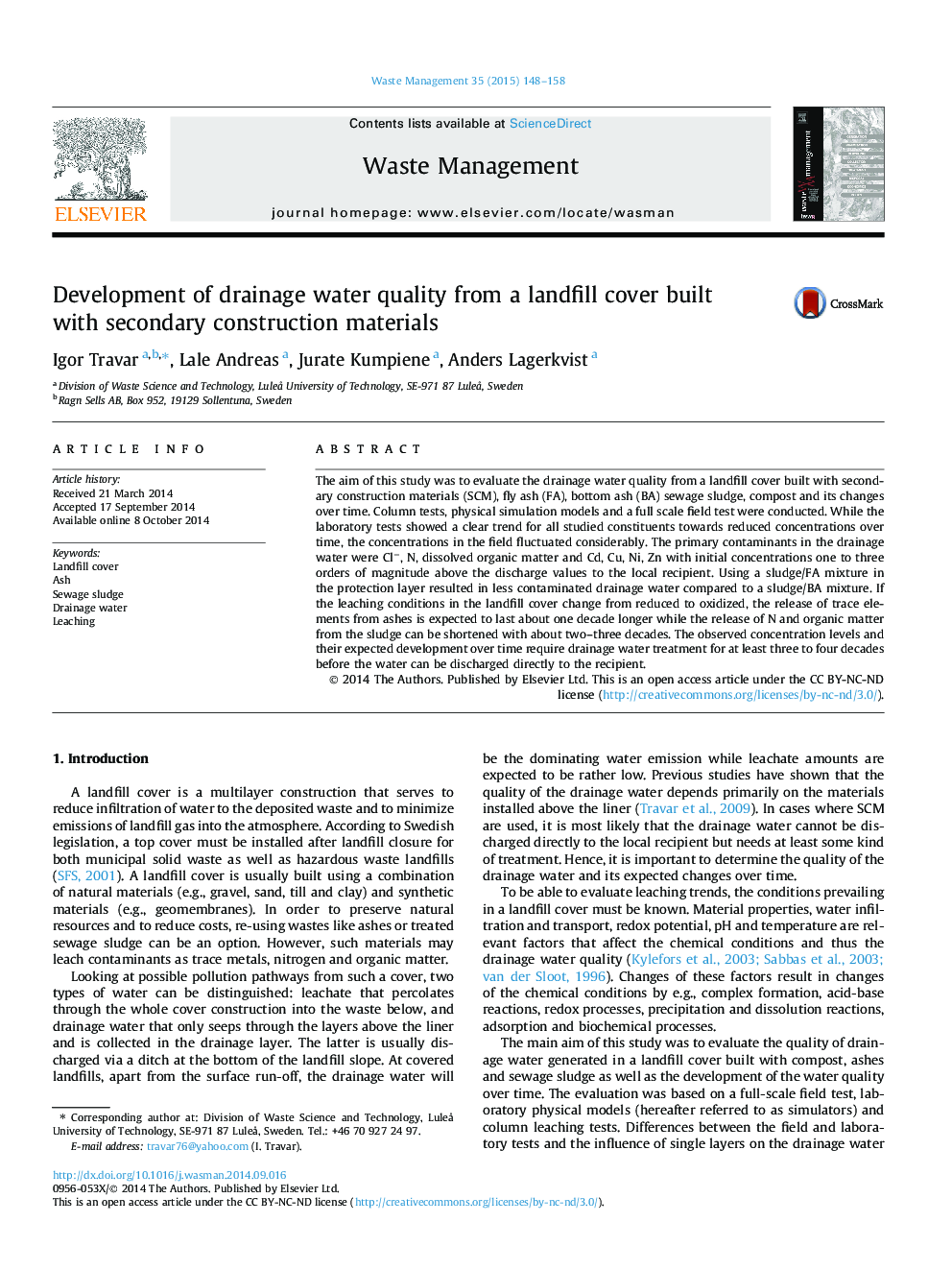| کد مقاله | کد نشریه | سال انتشار | مقاله انگلیسی | نسخه تمام متن |
|---|---|---|---|---|
| 6355094 | 1622650 | 2015 | 11 صفحه PDF | دانلود رایگان |
- Drainage water quality from a landfill cover built with waste materials was studied.
- The primary contaminants were Clâ, N, dissolved organic matter and Cd, Cu, Ni, Zn.
- The initial element concentrations were 1-3 magnitudes higher than the limit values.
- All studied constituents reduced concentrations over time.
- The drainage water needs treatment for at least three to four decades.
The aim of this study was to evaluate the drainage water quality from a landfill cover built with secondary construction materials (SCM), fly ash (FA), bottom ash (BA) sewage sludge, compost and its changes over time. Column tests, physical simulation models and a full scale field test were conducted. While the laboratory tests showed a clear trend for all studied constituents towards reduced concentrations over time, the concentrations in the field fluctuated considerably. The primary contaminants in the drainage water were Clâ, N, dissolved organic matter and Cd, Cu, Ni, Zn with initial concentrations one to three orders of magnitude above the discharge values to the local recipient. Using a sludge/FA mixture in the protection layer resulted in less contaminated drainage water compared to a sludge/BA mixture. If the leaching conditions in the landfill cover change from reduced to oxidized, the release of trace elements from ashes is expected to last about one decade longer while the release of N and organic matter from the sludge can be shortened with about two-three decades. The observed concentration levels and their expected development over time require drainage water treatment for at least three to four decades before the water can be discharged directly to the recipient.
Journal: Waste Management - Volume 35, January 2015, Pages 148-158
